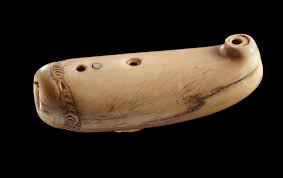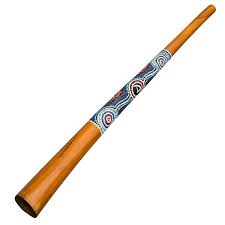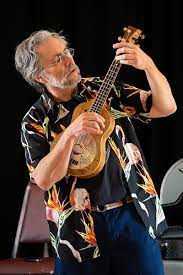Embark on a fascinating exploration of the rich and diverse traditional music of Australasia and Polynesia. Discover the unique sounds, instruments, and cultural significance of this captivating musical heritage.
1. The Melodic Beauty of Australasian Traditional Music
 Australasian traditional music is known for its melodic beauty and enchanting rhythms. The music of this region reflects the cultural diversity and rich heritage of the indigenous peoples of Australasia. Each culture within Australasia has its own unique musical traditions, but they all share a common thread of captivating melodies that resonate with the soul.
Australasian traditional music is known for its melodic beauty and enchanting rhythms. The music of this region reflects the cultural diversity and rich heritage of the indigenous peoples of Australasia. Each culture within Australasia has its own unique musical traditions, but they all share a common thread of captivating melodies that resonate with the soul.
The traditional music of Australasia is deeply connected to nature and the surrounding environment. The sounds of birds, the rustling of leaves, and the crashing of waves are often incorporated into the music, creating a harmonious blend of natural and human-made melodies.
Instruments such as the didgeridoo, the Maori nose flute, and the Polynesian ukulele are commonly used in traditional Australasian music. These instruments produce distinct sounds that are instantly recognizable and add depth to the melodic compositions.
The melodic beauty of Australasian traditional music has a profound impact on the listener. It evokes emotions, tells stories, and connects people to their cultural roots. Whether it's the haunting melodies of the Maori haka or the joyful tunes of Polynesian dance music, the music of Australasia leaves a lasting impression.
2. Instruments That Sing: Exploring Traditional Australasian Musical Instruments
Traditional Australasian music is brought to life by a fascinating array of musical instruments. These instruments not only produce enchanting melodies but also hold deep cultural significance.
One of the most iconic instruments in Australasia is the didgeridoo. This wind instrument, traditionally made from hollowed-out tree trunks, produces deep, resonant tones that mimic the sounds of nature. The didgeridoo is not only a musical instrument but also a cultural symbol for the indigenous peoples of Australia.
Another instrument that sings in the traditional music of Australasia is the Maori nose flute. Carved from bone or wood, the nose flute is played by blowing air into one end while covering various finger holes. It produces a hauntingly beautiful sound that is often used in ceremonial and storytelling performances.
The ukulele, originating from Polynesia, has also become an integral part of traditional Australasian music. Its cheerful and vibrant tones add a joyful element to the music, making it a popular instrument for singing and dancing.
Exploring the traditional musical instruments of Australasia is like taking a journey through history and culture. Each instrument tells a story and carries the spirit of the people who play it, making them an essential part of the rich musical heritage of the region.
3. Rituals and Ceremonies: Traditional Music in Australasian Cultures
Traditional music plays a vital role in the rituals and ceremonies of Australasian cultures. It is intertwined with every aspect of life, from birth to death, and is used to celebrate, mourn, communicate, and connect with the spiritual realm.
In Maori culture, for example, music is an integral part of the powhiri, a traditional welcoming ceremony. The powerful chants and rhythmic movements of the haka convey a deep sense of respect and unity. The haka is not just a performance but also a way to express cultural identity and pay homage to ancestors.
Similarly, in Polynesian cultures, music is an essential component of religious ceremonies. Traditional chants and songs are used to invoke the gods, seek blessings, and tell stories of creation and mythology. The rhythmic beats of drums and the harmonies of voices create a sacred atmosphere and transport participants into a spiritual realm.
The rituals and ceremonies of Australasian cultures provide a glimpse into the deep cultural significance of traditional music. They demonstrate how music is not just a form of entertainment but also a means of connecting with one's roots, honoring ancestors, and preserving cultural heritage.
4. Cultural Influences: The Intersection of Tradition and Modernity in Australasian Music
Australasian music is a vibrant reflection of the intersection between tradition and modernity. While traditional music forms the foundation, contemporary influences have shaped and enriched the musical landscape of the region.
In recent years, there has been a resurgence of interest in traditional music among younger generations. Artists and musicians are exploring ways to blend traditional melodies and instruments with modern styles, creating a unique fusion that appeals to a wider audience.
The influence of Western music and global popular culture is also evident in the contemporary music scene of Australasia. Traditional instruments are being incorporated into modern genres such as pop, rock, and hip-hop, creating a fresh and dynamic sound that embraces both tradition and innovation.
The intersection of tradition and modernity in Australasian music is not just limited to the music itself. It is also reflected in the lyrics, themes, and messages conveyed through the songs. Artists are using their music as a platform to address social issues, express cultural pride, and promote unity and diversity.
The cultural influences on Australasian music are ever-evolving, creating a vibrant and dynamic musical landscape that celebrates both tradition and innovation.
5. Preserving and Celebrating Traditional Music: Festivals and Institutions
Preserving and celebrating traditional music is of utmost importance in Australasia. Festivals and institutions play a crucial role in ensuring the continuity and promotion of traditional musical heritage.
One of the most prominent festivals dedicated to traditional music in Australasia is the Womadelaide festival. Held annually in Adelaide, Australia, the festival brings together musicians from around the world to celebrate diverse cultural traditions, including traditional Australasian music. It serves as a platform for both established and emerging artists to showcase their talent and connect with a global audience.
In addition to festivals, institutions such as the National Museum of Australia and Te Papa Tongarewa in New Zealand actively work towards preserving and promoting traditional music. They collect and archive recordings, instruments, and artifacts related to traditional music, ensuring that future generations can learn and appreciate this invaluable cultural heritage.
Community initiatives and grassroots organizations also play a vital role in preserving traditional music. They offer workshops, classes, and performances to engage the local community and pass on the knowledge and skills associated with traditional music.
By preserving and celebrating traditional music through festivals and institutions, Australasia ensures that its rich musical heritage continues to thrive and inspire future generations.

04-Feb-2024 08:58:50
Related Articles




Write a Comment